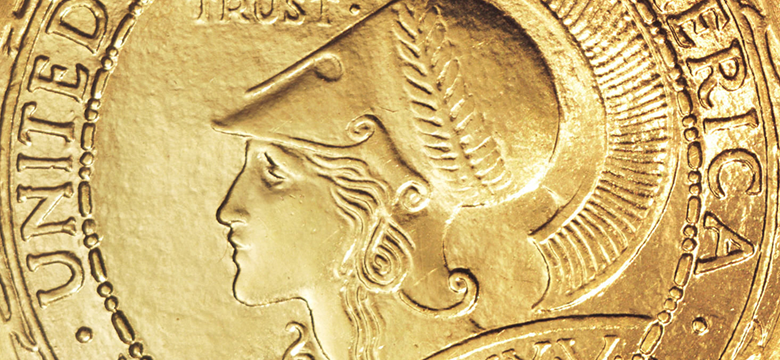
United States commemorative coins, or coins struck especially for collectors in remembrance of a historical person or event, are fascinating to discover due to the wealth of history that has surrounded their existence since the first commemorative half dollar was struck in 1892.
Over the years, such coins have been struck in the United States to commemorate national events, celebrate the establishment of an American state, remember famous people, or call to mind another aspect of America’s cultural heritage. As an example, half dollars were struck between 1934 and 1938 to commemorate the centennial of Texas’ independence. In addition, several commemorative coins in both gold and silver were issued to commemorate the 1915 Panama-Pacific Exposition in San Francisco, which celebrated the opening of the Panama Canal.
Struck between 1892 and the 1950s, these first commemoratives are known as “Classic Commemoratives,” where the more recent issues of the 1980s and beyond tend to be referred to as “Modern Commemoratives.” Regardless of the specific event or situation that a classic commemorative depicts, they have a common thread in how they serve to educate future generations on noteworthy aspects of American history and culture.
At the same time, the variety of topics that these coins encompass makes them appealing to collectors, whether or not they wish to build an entire set of Classic Commemoratives (or “commems” for short.) A full set of Classic Silver “Commems” is generally considered to include 50 coins if collected by type or 144 coins if collected by date; this is made up almost entirely of half dollars, with the exception of the 1900 Lafayette Dollar Commemorative and the 1893 Isabella Quarter.
On the other hand, a set of Classic Gold Commemoratives is made up of 11 coins in denominations of $1, $2 ½, and $50. Although the idea of building such a large set may seem like a daunting task, several dedicated collectors have put together high-quality and complete commemorative sets over the years.
The various ways to collective classic commemoratives are not limited to building a full set, however. One might choose to collect only coins that relate to a particular time period, historical event, or even by denomination. For example, students of the Civil War might be most interested in the 1922 Ulysses S. Grant, 1925 Stone Mountain, and 1936 Battle of Gettysburg commemoratives.
Also, since several commemorative half dollars were struck over a period of more than one year, these coins can be collected by either date or type. This includes the 1946 to 1951 Booker T. Washington and 1935 to 1939 Arkansas half dollars, which were both struck multiple years in a row.
Some collectors even choose to add a commemorative coin to their non-numismatic collection since there is a connection between the topic of the coin and their collecting focus. For example, a Western Art collector might choose an Oregon Trail Memorial commemorative, struck between 1926 and 1939, because this coin depicts pioneers traveling through the American West along the 2,000 mile Oregon Trail.
Finally, many commemoratives are simply desirable due to their beautiful designs and aesthetic appeal, such as the lauded and aforementioned Panama Pacific series of coins.
Furthermore, the affordability of many commemorative coins also enhances their appeal, making them an achievable addition to most collectors’ sets. With the exception of a few pieces—such as the scarce and costly 1915-S Panama Pacific Exposition $50 Round and Octagonal gold commemoratives—most commemorative issues are fairly affordable in lower mint state grades. While some are condition rarities, there are many pieces that can be obtained for under $250 each in Mint State 63. On the opposite end of the spectrum, there are more costly or conditionally rare pieces that numismatic connoisseurs actively seek out for their sets.
Overall, the extensive and noteworthy series of Classic Commemoratives suits a range of collecting tastes, interests, and even budgets within the world of numismatics. They are truly a form of minted history.



Leave a Comment